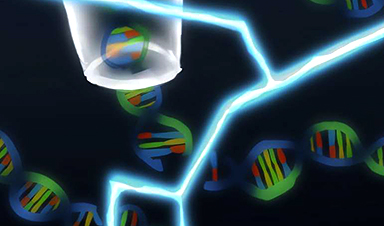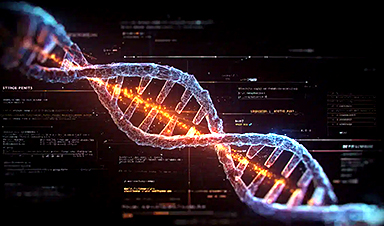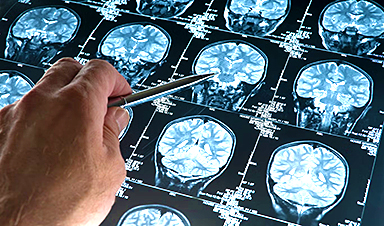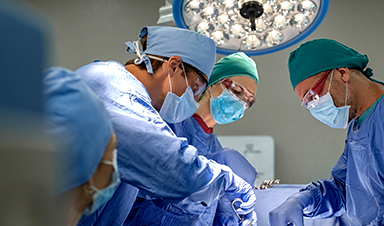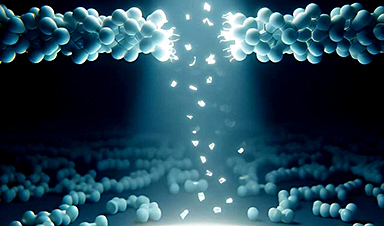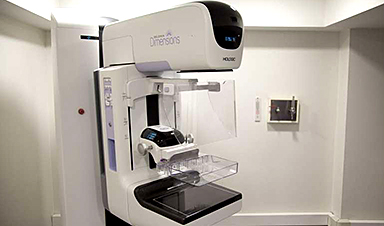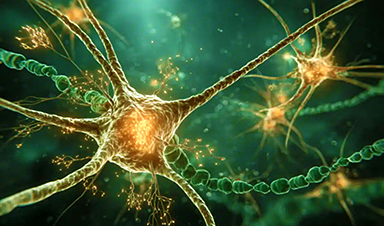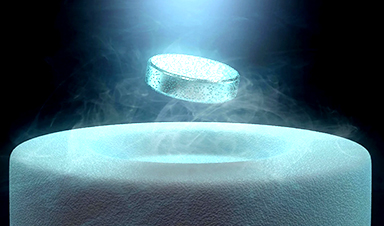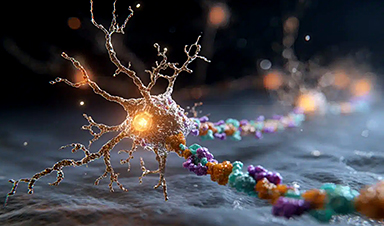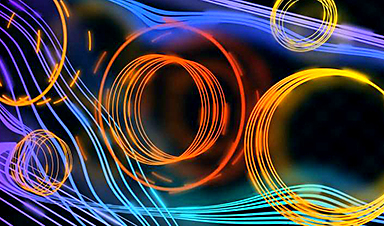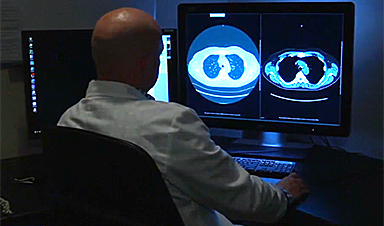August 23 2025
News – Curated by Amanda Scott, Alias Group Creative
Follow her on Bluesky
Nanopore technique for measuring DNA damage could improve cancer therapy and radiological emergency response
Scientists at the National Institute of Standards and Technology (NIST) have developed a new technology for measuring how radiation damages DNA molecules. This novel technique, which passes DNA through tiny openings called nanopores, detects [...]
AI Tool Shows Exactly When Genes Turn On and Off
Summary: Researchers have developed an AI-powered tool called chronODE that models how genes turn on and off during brain development. By combining mathematics, machine learning, and genomic data, the method identifies exact “switching points” that [...]
Your brain could get bigger – not smaller – as you age
recently asked myself if I’ll still have a healthy brain as I get older. I hold a professorship at a neurology department. Nevertheless, it is difficult for me to judge if a particular brain, [...]
Hidden Cost of Smart AI: 50× More CO₂ for a Single Question
Every time we ask an AI a question, it doesn’t just return an answer—it also burns energy and emits carbon dioxide. German researchers found that some “thinking” AI models, which generate long, step-by-step reasoning [...]
Genetically-engineered immune cells show promise for preventing organ rejection
A Medical University of South Carolina team reports in Frontiers in Immunology that it has engineered a new type of genetically modified immune cell that can precisely target and neutralize antibody-producing cells complicit in organ rejection. [...]
Building and breaking plastics with light: Chemists rethink plastic recycling
What if recycling plastics were as simple as flicking a switch? At TU/e, Assistant Professor Fabian Eisenreich is making that vision a reality by using LED light to both create and break down a [...]
Generative AI Designs Novel Antibiotics That Defeat Defiant Drug-Resistant Superbugs
Harnessing generative AI, MIT scientists have created groundbreaking antibiotics with unique membrane-targeting mechanisms, offering fresh hope against two of the world’s most formidable drug-resistant pathogens. With the help of artificial intelligence, MIT researchers have [...]
AI finds more breast tumors earlier than traditional double radiologist review
AI is detecting tumors more often and earlier in the Dutch breast cancer screening program. Those tumors can then be treated at an earlier stage. This has been demonstrated by researchers led by Radboud [...]
Lavender oil could speed recovery after brain surgery
A week of lavender-scented nights helped brain surgery patients sleep more deeply, shorten delirium, and feel calmer, pointing to a simple, natural aid for post-surgery care. A randomized controlled trial investigating the therapeutic impact [...]
Targeting Nanoparticles for Heart Repair
Scientists have engineered dual-membrane nanoparticles that home in on heart tissue after a heart attack, delivering regenerative molecules while evading the body’s immune defences. Myocardial infarction, better known as a heart attack, is a [...]
Natural Compound Combo Restores Aging Brain Cells
Scientists have identified a natural compound combination that reverses aging-related brain cell decline and removes harmful Alzheimer’s-linked proteins. The treatment, combining nicotinamide (vitamin B3) and the green tea antioxidant epigallocatechin gallate, restores guanosine triphosphate [...]
Silver Nanoparticles Get a Green Makeover: An Eco-Friendly Way to Target Diabetes
Researchers have developed an eco-friendly method to produce silver nanoparticles from the roots of Martynia annua, showing strong antioxidant and anti-diabetic potential while avoiding the toxic by-products of conventional synthesis. Silver nanoparticles are particularly popular in research because [...]
Quantum Breakthrough: Scientists Find “Backdoor” to 60-Year-Old Superconducting Mystery
A Copenhagen team has unlocked a clever “backdoor” into studying rare quantum states once thought beyond reach. Scientists at the Niels Bohr Institute, University of Copenhagen, have discovered a new approach for investigating rare [...]
3D-Printed Nylon Filters With Titanium Dioxide For Greywater Treatment
A team of researchers has developed a novel water filtration system that combines nanotechnology with 3D printing, aiming to create a low-cost, sustainable solution for greywater treatment. As reported in Micro & Nano Letters, the study demonstrates this [...]
New COVID variant ‘Stratus’ is spreading in the U.S. and worldwide
A new COVID variant is climbing the ranks in the U.S., becoming the third-most common strain of the summer. Variant XFG, colloquially known as "Stratus," was first detected in Southeast Asia in January but [...]
Fat Molecule May Control How You Feel Emotion
Key Questions Answered Q: What did researchers discover about the serotonin 5-HT1A receptor? A: They mapped how it activates different brain signaling pathways, offering insight into how mood and emotion are regulated at the [...]
Nanodevice uses sound to sculpt light, paving the way for better displays and imaging
Light can behave in very unexpected ways when you squeeze it into small spaces. In a paper in the journal Science, Mark Brongersma, a professor of materials science [...]
ChatGPT helps speed up patient screening for clinical trials
A new study in the academic journal Machine Learning: Health discovers that ChatGPT can accelerate patient screening for clinical trials, showing promise in reducing delays and improving trial success rates. Researchers at UT Southwestern Medical Centre used [...]
New Study Reveals This Popular Fruit Is Actually a “Superfood”
A new peer-reviewed article argues that grapes deserve a place among today’s top superfoods. A recent article published in the peer-reviewed Journal of Agriculture and Food Chemistry takes a closer look at the term [...]
Experimental Drug Reverses PTSD Symptoms in Mice – Already in Human Trials
Excessive levels of GABA released by astrocytes impair the brain’s ability to extinguish fear responses in PTSD, but a newly identified drug target offers promising hope for treatment. Many people with post-traumatic stress disorder (PTSD) [...]
Frank Boehm (Founder, NanoAppsMedical Inc.) interview

Dr. Bob Hieronimus hosted an in depth two-hour long interview with NanoApps Medical Founder Frank Boehm, who discussed his first book, and his three new books in progress. Among the topics of discussion were his startup NanoApps Medical, the challenges of securing funding for nanomedical research, and how the EU is standing out due to its exciting and aggressive program of investing heavily in innovation and the future.
Frank then articulated his vision of how synergies between nanotechnology, nanomedicine, and AI may culminate (in ~10-20 years time) in what he refers to as Global Health Care Equivalency (GHCE), which will be driven by Molecular Manufacturing (MM). Further topics included nanomedicine in space applications, and how a brain/cloud interface might some day emerge through nanomedical robotics.
Nanomedical Device and Systems Design: Challenges, Possibilities, Visions by Frank Boehm
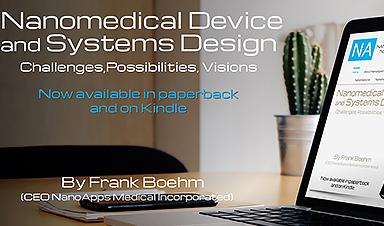
Nanomedical Device and Systems Design: Challenges, Possibilities, Visions by Frank Boehm of NanoApps Medical Inc. serves as a preliminary guide toward the inspiration of specific investigative pathways that may lead to meaningful discourse and significant advances in nanomedicine/nanotechnology.
This volume considers the potential of future innovations that will involve nanomedical devices and systems. It endeavors to explore remarkable possibilities spanning medical diagnostics, therapeutics, and other advancements that may be enabled within this discipline.
In particular, this book investigates just how nanomedical diagnostic and therapeutic devices and systems might ultimately be designed and engineered to accurately diagnose and eradicate pathogens, toxins, and myriad disease states.
Frank Boehm contributes to 'The Physics of the Mind and Brain Disorders' – Now available from Springer Press
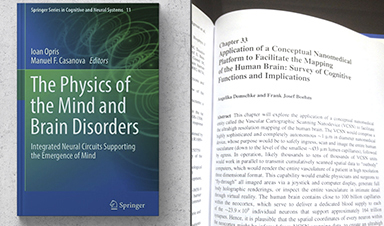
Frank Boehm (NanoApps Medical CEO) and Angelika Domschke contributed the chapter : "Application of a Conceptual Nanomedical Platform to Facilitate the Mapping of the Human Brain: Survey of Cognitive Functions and Implications".
The book covers recent advances in the understanding of brain structure, function and disorders based on the fundamental principles of physics. It covers a broad range of physical phenomena occurring in the brain circuits for perception, cognition, emotion and action, representing the building blocks of the mind.
It provides novel insights into the devastating brain disorders of the mind such as schizophrenia, dementia, autism, aging or addictions, as well as into the new devices for brain repair.
Potential Nanomedical Countermeasures to Mitigate the Effects of Space on Humans
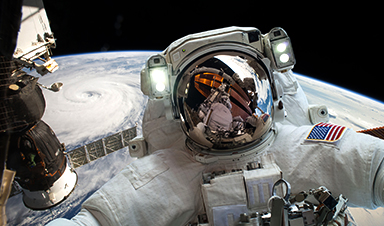
Incremental progress has been made on several fronts that may employ nanomedical strategies, to potentially counteract the deleterious effects of galactic cosmic rays and microgravity on human physiology. The implementation of these strategies and the enhancement of their preventative, diagnostic, or therapeutic effects for future orbital, planetary, and deep space missions might be enabled via diverse and potent synergies between unique nanomedical applications of nanomaterials and nanotechnologies.
NanoApps Medical, Inc. Aiming to Develop Nanobiosensor for Malaria, Ebola, and Zika
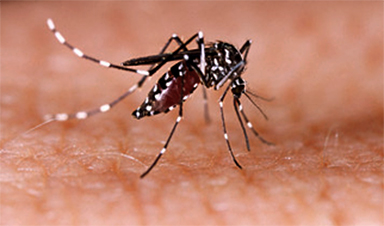
NanoApps Medical, Inc. (Vancouver, Canada) is working to develop a point of care diagnostic nanobiosensor platform for the detection of Malaria via saliva samples, which may be reconfigured to detect Ebola, and Zika. The use of this nanobiosensor will be far less invasive and safer than through the extraction of blood samples, while conveying more rapid results.
The current gold standard for the detection of Malaria is blood smear microscopy, the results of which may take from many hours to several days to determine. This test also has the requirements of technical expertise in blood sample preparation, and a trained microscopist. Hence, the proposed nanobiosensor would be a significant improvement in terms of expediting and simplifying the diagnosis of Malaria, Ebola, and Zika in that it would be easy to administer, and provide rapid and clearly understandable results.
Frank Boehm represents Alias Group Creative in North America

From Alias Group Creative:
To better serve our new Aerospace, Nanotechnology, and Nanomedicine clients we are pleased to engage Frank Boehm of Vancouver Canada to represent Alias in North America.
A true entrepreneur and author of the respected reference book: Nanomedical Device and Systems Design: Challenges, Possibilities, Visions, Frank is the CEO of NanoApps Medical Inc.
Nanotechnology, Nanomedicine, and AI: Toward the Dream of Global Health Care Equivalency

Synergies between nanotechnology, nanomedicine, and AI may enable this vision on a global scale. Progress toward this goal will be incremental, with each successive wave of nanomedical technologies being more advanced than the previous wave. The tipping point will arrive with the emergence of Molecular Manufacturing (MM), which will make possible the economical fabrication of the types of advanced autonomous nanomedical devices that are described in Frank's initial book: Nanomedical Device and Systems Design: Challenges, Possibilities, Visions
NanoApps Medical keenly recognizes that such a massive undertaking on a global scale will require intense and high spirited collaboration with like minded individuals, research labs, institutions, organizations, and government agencies worldwide for its realization. It will also require significant resources and time.
NanoApps Medical Inc. Near-Term Projects
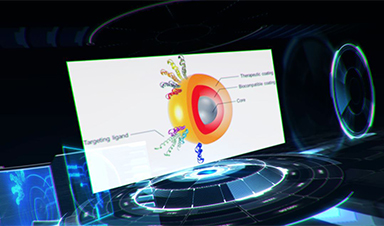
NanoApps Medical is aiming to investigate the possibility that superparamagnetic nanoparticles (SPIONs) and other classes of nanoparticles (e.g., gold coated nanoshells) might have the capacity to target cancerous tumors, metastasizing cancer cells, pathogens, etc. to deactivate/eliminate them via hypothermia.
NanoMedicine and Human Spaceflight

Future nanomedical devices and systems will have strong potential to enable a broad range of aerospace and space applications. With further dimensional reductions in conjunction with the increased capabilities of nanoelectronics and artificial intelligence (AI), nanomedicine may facilitate the development of a wide array of advanced nanomedical diagnostic and therapeutic capabilities dedicated to the health and well being of future astronauts and space pioneers, the inhabitants of future Lunar and Mars colonies, and deep space explorers.
Ocular and Cellular Anomalies
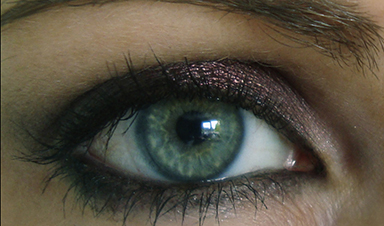
Microgravity induced ophthalmic anomalies were observed by Mader et al in seven astronauts who were involved in long-duration (six month) space missions to the ISS. An additional 300 astronauts were asked to complete a questionnaire in regard to in-flight vision changes. For the seven astronauts under study, the ophthalmic results indicated disk edema (in five), globe flattening (in five), choroidal folds (in five), cotton wool spots (in three), nerve fiber layer thickening (in six), decreased near-vision (in six). Further, optic nerve sheath distension and tortuous optic nerves were observed.
Of the 300 questionnaire respondents, 60% of the astronauts who were engaged in long duration missions reported experiencing degradation in both their near and distance vision; these conditions persisted for years postflight for some individuals.
Cardiac Function and Muscle Atrophy

In 2004, NASA released its Bioastronautics Critical Path Roadmap (BCPR), with an aim to "establish tolerance limits to the space environment and develop countermeasures to overcome these problems." The BCPR listed close to 50 space-related medical risk factors, which included those associated with the potential for serious cardiac dysrhythmias (from unknown causes) that may lead to hypotension (low blood pressure) and syncope (fainting). Further, significant cardiac rhythm issues (e.g., ventricular tachycardia – rapid heartbeat), linked with altered cardiac electrical activity and stability were reported for a number of cases during a MIR mission.
Degraded cardiac and vascular functionality, as well as decreased cardiac mass can result from both short and long duration spaceflight.
